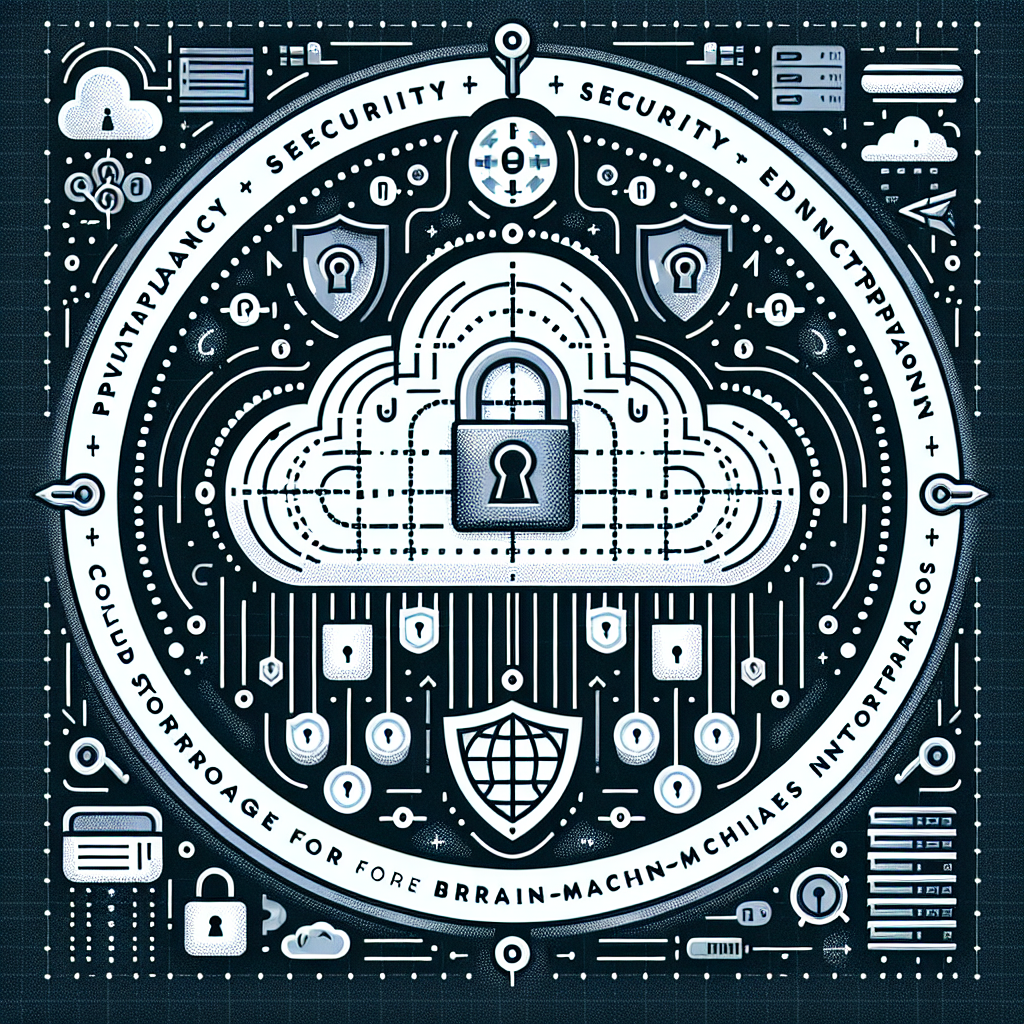Unlock encrypted content
Please enter your SSCE key to initiate on-the-fly decryption.
Decryption key: (Click cancel if you don't have the key)
Copied link to clipboard.
This feature is unavailable for free accounts. Upgrade now and enjoy all Premium benefits.
Go Premium!
This feature is unavailable for free accounts. Upgrade now and enjoy all Premium benefits.
Go Premium!
Please open this page in browser ( Google Chrome or Safari ) to use this feature.
Open In Browser
Why Cloud Storage is Better than NAS: A Comprehensive Guide to Efficient File Management and Data Storage.
Random related video for this blog.
Copied share link to clipboard.
In today's digital age, the need for efficient file management and data storage has become more crucial than ever. With the rapid advancement of technology, traditional methods of file storage and management, such as Network Attached Storage (NAS), are being replaced by more advanced and user-friendly solutions like cloud storage. In this article, we will explore the reasons why cloud storage is superior to NAS, delving into the benefits of 5G technology, machine learning, file streaming, and intelligent file tagging. We will also discuss the importance of efficient file redundancy and the role of a user-friendly interface in ensuring a seamless file management experience.
5G Technology: Revolutionizing Data Transfer Speeds
One of the key advantages of cloud storage over NAS is the integration of 5G technology. 5G, the fifth generation of wireless technology, offers significantly faster data transfer speeds compared to its predecessors. With 5G, users can upload and download files at lightning-fast speeds, making file management and data storage more efficient than ever before. This is particularly beneficial for businesses and individuals who deal with large files or need to transfer data quickly.Why Cloud Storage is Better than NAS
Cloud storage offers numerous advantages over NAS in terms of file management and data storage. One of the main benefits is the ability to access files from anywhere, at any time, using any device. Unlike NAS, which requires physical access to the storage device, cloud storage allows users to access their files remotely, making collaboration and file sharing seamless. Additionally, cloud storage providers often offer user-friendly interfaces and intuitive file management systems, making it easy for users to organize and locate their files. Another advantage of cloud storage is the implementation of machine learning algorithms. Machine learning enables cloud storage platforms to analyze user behavior and automatically categorize andtag files based on their content. This intelligent file tagging system simplifies file management by eliminating the need for manual tagging and organization. For example, a cloud storage platform using machine learning may automatically tag photos based on the objects or people in them, allowing users to easily search and locate specific images.
Data Storage: The Importance of File Redundancy
Efficient file redundancy is crucial in ensuring the safety and reliability of stored data. Traditional NAS systems often rely on RAID (Redundant Array of Independent Disks) technology to provide data redundancy. While RAID can protect against disk failure, it is susceptible to hardware failures and does not offer the same level of protection against data loss as cloud storage. Cloud storage providers, on the other hand, employ advanced data replication techniques to ensure file redundancy. This means that files are stored in multiple locations, often in different data centers, to protect against data loss. In the event of a hardware failure or natural disaster, cloud storage providers can quickly restore data from backups, providing a higher level of data protection compared to NAS.User-Friendly Interface: Streamlining File Management
A user-friendly interface is a key aspect of efficient file management. Cloud storage platforms prioritize ease of use, offering intuitive interfaces that allow users to navigate and manage their files effortlessly. With a user-friendly interface, users can quickly locate and access their files, reducing the time spent searching for specific documents or media. Additionally, cloud storage platforms often provide features such as file streaming, which allows users to access and stream media files without the need to download them. This is particularly useful for large video or audio files, as it eliminates the need for extensive local storage capacity. Users can simply stream the media files directly from the cloud storage platform, saving both time and storage space.Conclusion
In conclusion, cloud storage offers numerous advantages over NAS when it comes to efficient file management and data storage. The integration of 5G technology ensures lightning-fast data transfer speeds, while machine learning algorithms simplify file organization through intelligent tagging. Cloud storage providers also prioritize file redundancy and data protection, offering a higher level of security compared to traditional NAS systems. With user-friendly interfaces and features like file streaming, cloud storage platforms streamline file management, making it easier for individuals and businesses to access, organize, and share their files.Frequently Asked Questions (FAQs)
Question: What is the difference between cloud storage and NAS? Answer:
Cloud storage allows users to access and store their files remotely, using any device with an internet connection. NAS, on the other hand, requires physical access to the storage device and is typically used for local file storage and sharing within a network.
Question: How does machine learning improve file management in cloud storage? Answer:
Machine learning algorithms analyze user behavior and automatically categorize and tag files based on their content. This simplifies file management by eliminating the need for manual tagging and organization.
Question: Is cloud storage more secure than NAS? Answer:
Cloud storage providers prioritize data redundancy and employ advanced data replication techniques to protect against data loss. This, coupled with the ability to quickly restore data from backups, provides a higher level of data protection compared to NAS.
Case Studies Case Study 1: Company X's Transition to Cloud Storage Company X, a growing tech startup, was struggling with inefficient file management using NAS. Their files were scattered across multiple storage devices, making it challenging for employees to collaborate and access the necessary files. Additionally, they faced the risk of data loss due to hardware failures. To address these issues, Company X decided to transition to cloud storage. By migrating their files to a cloud storage platform, they gained the ability to access and share files remotely, resulting in improved collaboration and productivity. The intelligent file tagging system offered by the cloud storage platform also made it easier for employees to locate specific files, saving valuable time and effort. Furthermore, the implementation of cloud storage provided Company X with enhanced data protection. The advanced data replication techniques employed by the cloud storage provider ensured file redundancy and minimized the risk of data loss. This gave the company peace of mind, knowing that their valuable data was securely stored and backed up. Case Study 2: Photographer Y's Streamlined Workflow Photographer Y, a professional photographer specializing in wedding photography, was struggling with the large volume of photos and videos that needed to be stored and organized. Traditional NAS systems were proving to be cumbersome and time-consuming, requiring manual organization and tagging of each file. To streamline their workflow, Photographer Y decided to switch to cloud storage. With the help of a cloud storage platform, they were able to automatically tag and categorize their photos based on the objects and people within them. This intelligent file tagging system significantly reduced the time spent on manual organization, allowing Photographer Y to focus more on their creative work. Additionally, the file streaming feature offered by the cloud storage platform allowed Photographer Y to easily share their portfolio with clients. Instead of sending large files via email or physical storage devices, clients could simply stream the photos directly from the cloud storage platform, providing a seamless and efficient experience for both parties.
By Amelia Isabella
Email: [email protected]
Related
Blockchain Technology and Futuristic Gadgets: Revolutionizing Data Sharing Options
June 14, 2023
Read More
The Future of Data Management: Mind Uploading, Neuromorphic Storage, and...
October 30, 2024
Read More
Highly Available Cloud Infrastructure: Ensuring Data Security and Accessibility
July 23, 2023
Read More
Data Analytics, Cloud Infrastructure, and Quantum Encryption: The Future of...
May 31, 2023
Read More
Popular
The Future of File Storage: Exploring Cryonics, Transhumanism, and Advanced...
September 7, 2025
Read More
The Future of Cloud Storage: Innovations in Scalable Storage, Synchronization,...
September 10, 2025
Read More
Revolutionizing Data Management: Innovations in Storage, Security, and Sustainable Technology.
September 24, 2025
Read More
The Future of Technology: Data Privacy, Self-Driving Cars, and Hybrid...
September 21, 2025
Read More
Exploring the Future of Data Management: Security, Efficiency, and Cognitive...
September 28, 2025
Read More
Latest
Exploring the Future of Data Management: Security, Efficiency, and Cognitive...
September 28, 2025
Read More
Revolutionizing Data Management: Innovations in Storage, Security, and Sustainable Technology.
September 24, 2025
Read More
The Future of Technology: Data Privacy, Self-Driving Cars, and Hybrid...
September 21, 2025
Read More
The Future of Cloud Storage: Innovations in Scalable Storage, Synchronization,...
September 10, 2025
Read More
The Future of File Storage: Exploring Cryonics, Transhumanism, and Advanced...
September 7, 2025
Read More
Innovations in Cloud Storage and Data Management: Navigating the Future...
September 3, 2025
Read More
The Future of Technology: Integrating Virtual Reality, Autonomous Driving, and...
August 27, 2025
Read More
The Future of File Management: Innovations in Data Sovereignty, Security,...
August 24, 2025
Read More
The Future of Data Management: Exploring Innovations in Robotics, Genetic...
August 20, 2025
Read More
The Future of Data Management: Exploring Efficient Technologies in File...
August 13, 2025
Read More
The Future of Technology: Exploring Innovations in Artificial Intelligence, Data...
August 10, 2025
Read More
The Future of File Management: Exploring Cloud-Based Backup, Video Storage,...
August 6, 2025
Read More
The Future of Data Storage: Exploring Transhumanism, File Management, and...
August 3, 2025
Read More
The Future of Technology: Innovations in Electric Vehicles, Data Migration,...
July 30, 2025
Read More






















